
Strategies for engaging students in in-person, virtual, and hybrid instruction
As schools begin a post-pandemic transition, educators should consider how to strengthen the social, emotional, and behavioral supports for students. Three foundational components are important to keep at the forefront of efforts to support students, regardless of the learning environment ...

Celebrating how school social workers can help students Bounce Back even in virtual settings
We celebrated National School Social Worker week from March 7 - March 13, 2021 as part of Social Work Month. This school year provided unique challenges for school social workers (SSWs) as well as opportunities for innovation ...

Special educator reflections on distance learning during COVID-19
Due to COVID-19, educators have been tasked with finding new ways to continue teaching their students virtually with little time to prepare. In particular, since the start of the school closures, federal requirements for (IEP) compliance have changed ...

Overcoming the early childhood suspension & expulsion problem
If preschool is designed to set a foundation of learning for children, expose them to structure, and build social, emotional and behaviors skills, then what is happening to produce these alarming rates? ...

Strategies for communicating effectively with students across learning environments
This school year has presented many uncertainties for teachers as they continue to navigate virtual, hybrid, and in-person learning environments. Using clear and positive communication can build trusting and supportive teacher-student relationships, especially with students who experience behavioral challenges. But what exactly does effective educator-student communication look like, particularly in ...

How to boost wellness for high school students during distance learning
Spring 2020 school closures left teachers and district officials scrambling to restructure their classrooms with as few disruptions as possible. High school teachers faced the difficult task of trying to preserve their students’ motivation to finish strong and stay on track to graduate, despite the looming anxiety and uncertainty that ...
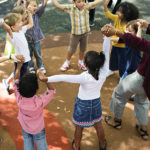
A lifeline of support: Arkansas’s innovative program to help early childhood educators support young children
Teaching preschool is simultaneously joyous and challenging. Students differ widely in their temperaments and their experience sharing space and resources with peers. Although many children adapt quickly to a group care environment, for others it can be challenging. Some early educators can access related professional development or external specialists that ...
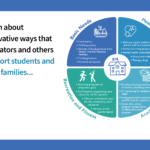
It takes a community: How a community school can serve the whole child and family
In our work with schools, we often learn about innovative ways that educators and others can support students and their families. Our Student Behavior Research Team’s work with Project SECURE, funded by the National Institute of Justice, brought us to Hillcrest Elementary School, ...

Educator reflections on distance learning during COVID-19
We spoke with two teachers at the beginning of school closures and again at the end of the school year to learn about their adjustment to distance learning ...
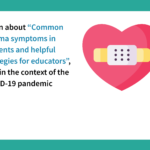
5 things educators can do virtually to support students experiencing trauma
In the context of the COVID-19 pandemic, we adapted strategies from the “Common trauma symptoms in students and helpful strategies for educators” handout to help educators address student’s social-emotional and mental health needs associated with trauma in virtual settings ...
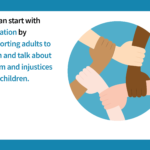
Educating and speaking with children about racism
Our Student Behavior Blog team at SRI Education is deeply heartbroken and outraged by the racism, brutality, and hatred that plague Black children, families, and individuals, not only with regard to recent events, but with recognition that these are pervasive issues they face in every moment of their lives. Consistent ...
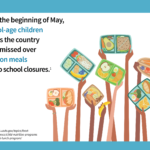
Food access for families with school-aged children during COVID-19
On a typical day, schools provide low- or no-cost lunch to 29.7 million children. As the COVID -19 pandemic stretches on and the unemployment rate continues to skyrocket, many families are finding it increasingly challenging to provide meals for their children. National food assistance programs, community food banks, and local school districts have ...
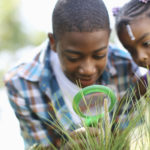
Maintaining wellness in crisis: Boosting children’s emotional health
Measures taken to address the spread of COVID-19, from precautionary social distancing to shelter-in-place orders, have dramatically impacted children and their families. In addition to navigating their own stress during a period of uncertainty and change, parents are faced with addressing the questions and concerns of their children, many of ...

Thinking about working with researchers at your school? See what one of our closest school partners has to say
Jennifer Donahue is a program administrator at the San Francisco Unified School District’s Student, Family and Community Support Department and has been a close partner of SRI’s Behavior Research team for many years. We recently interviewed Jennifer on what her experience has been and being involved in a researcher-practitioner partnership ...

Questions to ask before implementing a school-wide program
Multi-tiered systems of support (MTSS) typically include school-wide or universal support (tier 1), targeted interventions for at-risk students (tier 2), and individualized services for students with intensive needs (tier 3). Read our post for more information about multi-tiered frameworks. MTSS have been increasingly adopted across schools in the U.S. and ...
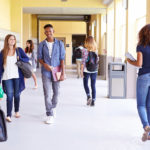
How can we keep students safe at school?
Acts of violence at school place pressure on educators and school leaders to better ensure the safety of their students. A comprehensive approach addresses school climate, student mental health programs, strategies to prevent violence, and physical security mechanisms. Our research has identified several promising practices to help keep students emotionally ...

Screen time can be good: 3 ways to support children’s social-emotional learning (SEL)
Given the ongoing debate about the value of screen time, many parents and educators are seeking research-supported best practices for using TV and videos to help support children’s learning and development. Look no further – we’ve summarized the research to give you 3 strategies for using videos to support SEL ...
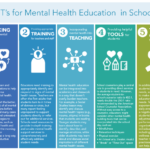
How can we incorporate mental health education into schools? Consider the 5 T’s.
Mental health is a critical part of students’ overall health and well-being. Students today face a range of demands that can impact their mental health. From meeting high academic expectations to navigating the world of social media to maintaining relationships with their peers, students often have busy schedules that result ...
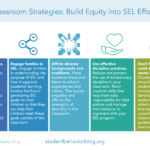
Want to build an equitable classroom? Start with social-emotional learning (SEL)
We expect teachers to handle a lot: create engaging learning experiences, differentiate instruction based on student needs, manage behavior, motivate students to learn, and tackle persistent gaps and inequities. More and more, teachers are meeting this challenge by embracing social-emotional learning (SEL), which can support academic learning, teach and reinforce ...
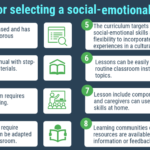
When you really want to focus on social-emotional learning (SEL): Selecting a standalone SEL program
Standalone social-emotional learning (SEL) programs are helpful tools for teachers who want to build students’ social-emotional skills in the classroom setting. However, it can be challenging to select an appropriate, practical, and effective classroom-wide curriculum that will work for all students. We have simplified the process to help teachers and ...
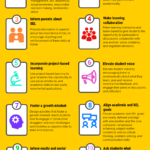
Incorporating social-emotional learning (SEL) into everyday academic instruction: How do I do it?
Although most teachers recognize the importance of teaching social-emotional skills, many are also concerned about having time to fulfill their other responsibilities. Here we highlight one approach to teaching social-emotional skills in the classroom: incorporating social-emotional learning (SEL) into everyday academic instruction ...
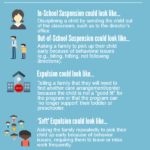
Preventing expulsions in early childhood and supporting all children’s success
In state-funded preschools, children are expelled at 3 times the rate of K-12 students, and private preschool programs expel children at more than 13 times the rate of K-12 students. Our researchers have developed an interactive guide with recommended policies and practices to support early education program leaders in reducing ...

Our evaluations of a program that addresses school climate and safety
Students learn best when a school establishes clear and consistent school-wide expectations for behavior. Establishing school-wide rules and routines can help prevent challenging behavior or negative incidents from occurring in the first place. Foundations is one example of a program that addresses school climate and safety by promoting positive discipline ...

When helping students hurts: Secondary Traumatic Stress (STS)
We were presenting to a group of teachers about our project examining the effects of a group-based intervention for middle schoolers experiencing traumatic stress. I was describing the effects of trauma on students’ academic performance when a teacher stood up and loudly exclaimed, “But what about OUR trauma? Who is ...

Why and how do we measure school climate?
Research has shown that a positive school climate is greatly beneficial for both students and educators. A positive school climate includes three main components: Engagement, Safety, and Environment. School climate measures can help educators, parents, and the community understand perceptions, set appropriate goals, identify priorities, and make decisions ...
